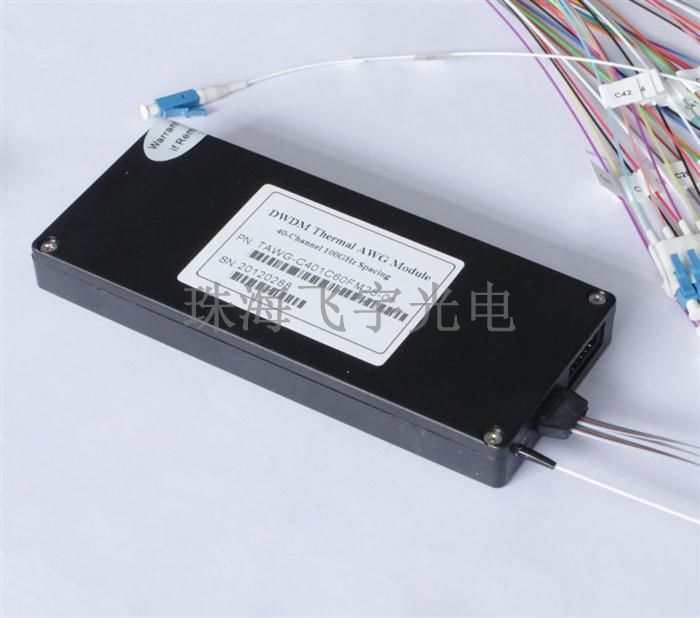飞宇光点提供各种AWG产品,包括50GHz,100GHz和200GHz的无热AWG(高斯AWG)和有热AWG(平顶AWG),这里给大家展示41通道无热高斯AWG
Athermal AWG(AAWG) have equivalent performance to standard Thermal AWG(TAWG) but require no electrical power for stabilization. They can be used as direct replacements for Thin Film Filters(Filter type DWDM module) for es where no power is available, also suitable for outdoor applicati over -30 to +70 degree in access networks. Flyin’s Athermal AWG(AAWG) provide excellent optical performance, high reliability, ease of fiber handling and power saving solution in a compact package. Different input and output fibers, such as SM fibers, MM fibers and PM fiber can be selected to meet different applicati. We can also offer different product packages, inluding special metal box and 19” 1U rackmount.
The planar DWDM components(Thermal/Athermal AWG) from Flyin Optronics are fully qualified according to Telcordia reliability assurance requirements for fiber optic and opto-electronic components (GR-1221-CORE/UNC, Generic Reliability Assurance Requirements for Fiber Optic Branching Components, and Telcordia TR-NWT-000468, Reliability Assurance Practices for Opto-electronic Devices).
Optical Specification (Gaussian Athermal AWG)
Parameters
Condition
Specs
Units
Min
Typ
Max
Number of Channels
41
Number Channel Spacing
100GHz
100
GHz
Cha. Center Wavelength
ITU frequency.
C -band
nm
Clear Channel Passband
±12.5
GHz
Wavelength Stability
Maximum range of the wavelength error of all channels and temperatures in average polarization.
±0.05
nm
-1 dB Channel Bandwidth
Clear channel bandwidth defined by passband shape. For each channel
0.24
nm
-3 dB Channel Bandwidth
Clear channel bandwidth defined by passband shape. For each channel
0.43
nm
Optical Insertion Loss at ITU grid
Defined as the minimum transmission at ITU wavelength for all channels. For each channel, at all temperatures and polarizati.
4.5
6.0
dB
Adjacent Channel Isolation
Insertion loss difference from the mean transmission at the ITU grid wavelength to the highest power, all polarizati, within the ITU band of the adjacent channels.
25
dB
Non-Adjacent, Channel Isolation
Insertion loss difference from the mean transmission at the ITU grid wavelength to the highest power, all polarizati, within the ITU band of the nonadjacent channels.
dB
Total Channel Isolation
Total cumulative insertion loss difference from the mean transmission at the ITU grid wavelength to the highest power, all polarizati, within the ITU band of all other channels, including adjacent channels.
22
dB
Insertion Loss Uniformity
Maximum range of the insertion loss variation within ITU across all channels, polarizati and temperatures.
1.5
dB
Directivity(Mux Only)
Ratio of reflected power out of any channel(other than channel n)to power in from the input channel n |
 |
|

